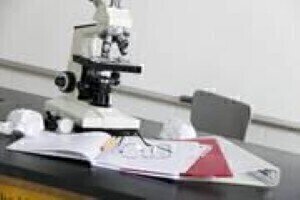Bioanalytical
Quantitative analysis shows DNA in human genome organises into irregularly folded fibres in cell division
Jul 31 2012
Quantitative analysis has shown that DNA in human genome is organised into irregularly folded fibres during cell division.
A study by researchers at the RIKEN SPring-8 Center and RIKEN Advanced Science Institute in Japan has uncovered irregular folded fibres in the DNA in human genome during cell division. Led by Kazuhiro Maeshima, they found DNA is wrapped around histones to form nucleosome fibers, which are then compressed into the chromosomes by large protein complexes called condensins.
Previous studies showed that nucleosomes are arranged into regular fibre structures that are 30 nanometers in diameter. This led to the classical anatomy of overall chromosome structure. Subsequent studies, however, showed that these regular fibre structures exist only in specialized cell types.
This is a grey-area which Mr Maeshima looked to explain in his latest research. Using three separate techniques, the team investigated chromosome structure in mitotic, or dividing, HeLa cells. They made use of cryo-electron microscopy, small-angle x-ray scattering (SAXS) and ultra-small x-ray scattering (USAXS) to uncover their results.
All three techniques produced consistent results, which showed repeating structures at approximately every 11 nanometers, but not at longer distances. This suggests that the chromatin is arranged like beads on a string, and therefore has an irregular folding pattern.
The results from the USAXS method showed that the chromosomes also have a fractal nature. It showed that the same organization repeats itself at different scales, and that is the structures arrange into a rod shape.
According to the researchers, there are two potential explanations for this shape. One is that the condensins bind to specific sites in the DNA, causing it to form self-assembling loops that interact with each other and produce repeating structures along the axis of the chromosome. Another explanation is that the formation of regularly repeating looped structures alone might be sufficient to generate the observed rod shape because of repulsive forces between adjacent loops.
Mr Maeshima said: "We focused on chromosomes in dividing cells.
"But we assume that a similar irregular folding also exists in interphase cells, and are now assessing that assumption."
Posted by Neil Clark
Digital Edition
Chromatography Today - Buyers' Guide 2022
October 2023
In This Edition Modern & Practical Applications - Accelerating ADC Development with Mass Spectrometry - Implementing High-Resolution Ion Mobility into Peptide Mapping Workflows Chromatogr...
View all digital editions
Events
May 05 2024 Seville, Spain
May 15 2024 Birmingham, UK
May 19 2024 Brno, Czech Republic
May 21 2024 Lagos, Nigeria
May 23 2024 Beijing, China














